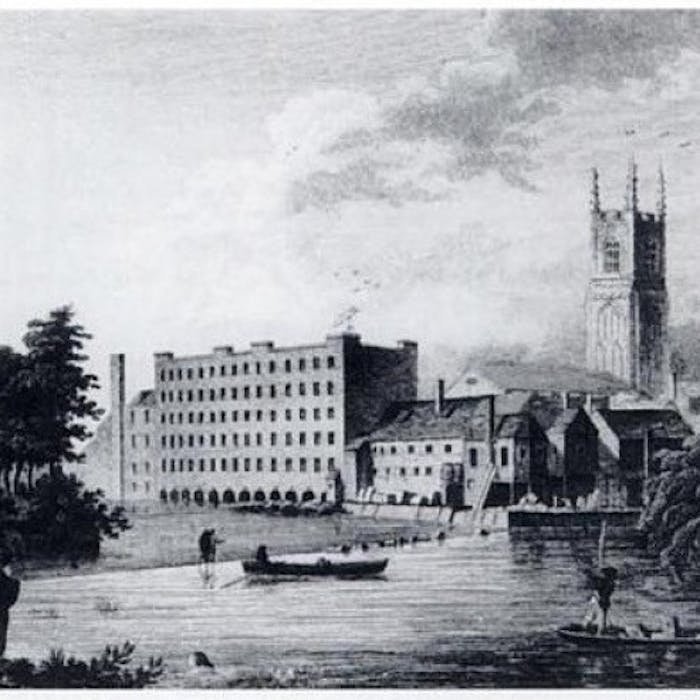
The First Factory: the Lombe Brothers Derby Silk Mill
Englishman John Lombe opened what is generally regarded as the first fully mechanised factory ever recorded in 1771 in Derby. It was built to manufacture silk, and resulted from a real life tale of espionage by Lombe when touring Italy, where he obtained the knowledge he needed of the best method for silk production.
The top European silk spinning of the time took place in Piedmont in the Kingdom of Sardinia in Northern Italy. Though industrial espionage was punishable by death, Lombe managed to visit and escape with sketches of the machinery used and the information he wanted to replicate the process.
When he returned to England he sought out the services of architect Geroge Sorocold to design and build his vision of the future.
In the centre of Derby, beside the fast-flowing River Derwent, Lombe and his brother Thomas built a structure that was to be imitated around the world: a long, slim, five-storey building with plain brick walls cut by a grid of windows.
The building, completed in 1721, housed three dozen large machines powered by a 7m-high waterwheel. It was a dramatic change in scale from what had been done before. The factory was born.
Legend has it that John Lombe's sudden death at the age of 29 soon after he built the original mill was the work of a female assassin, sent by the King of Sardinia.
The building's connection with silk production ended in about 1908 when F.W. Hampshire and Company, the chemists, moved into the premises to make fly papers and cough medicines. In 1910 a fire engulfed the Silk Mill. and its east wall fell into the river and the building was gutted. The fire service saved the shell of the tower and the outline of the doorways leading into the original five floors. These can be seen today on the tower staircase. The building was rebuilt to the same height but with three storeys instead of five and remains that way today.
During the 1920s, ownership passed to the Electricity Authority. It was used as stores, workshops and a canteen. Hidden from the road by the subsequently built power station, its existence was forgotten until the power station was demolished in 1970. It was then adapted for use as Derby’s Industrial Museum, which opened in 1974.
The Silk Mill, having helped shape Derby as a city of making and creativity, the museum is now being converted into the Museum of Making, currently under construction and due to open in 2021. Celebrating the area’s rich history of innovation, the Museum of Making in the Derwent Valley Mills UNESCO World Heritage Site 'will be a contemporary space telling Derby’s 300-year history of making to inspire new creativity'.
Further reading
Links to external websites are not maintained by Bite Sized Britain. They are provided to give users access to additional information. Bite Sized Britain is not responsible for the content of these external websites.
